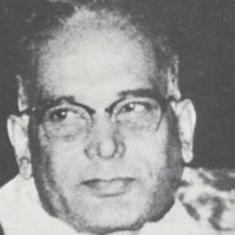In 2008, frustrated by the agitation against forcible land acquisition, Tata Motors announced it would exit West Bengal. The company chose to move its Nano car plant to Gujarat. The then chief minister Modi claimed that he made Tata’s entry hassle free, inviting Ratan Tata with an SMS.
The incident underlined the gap between Bengal and Gujarat. Both states lie at the two ends of India’s industrialisation scale. As a result, Gujarat has a per capita net domestic product nearly twice that of Bengal.
Paradoxically, however, this great industrial wealth translates quite poorly into human development. The latest confirmation of this comes from the newly released National Family Health Survey data which shows that Bengali children are significantly healthier than their Gujarati counterparts.
The NFHS covers more than 4 lakh households and offers the most comprehensive picture of India’s health statistics.


To further underline this trend is the fact the gap has widened over two decades. Between 1994 and 1996, Gujarat’s infant mortality rate was 63 per 1,000 births and Bengal’s was 58. This difference of five widened to one of more than nine in 2020.
Thus, paradoxically even as Gujarat had grown significantly richer than Bengal in two decades, Bengali children are also much more healthier than Gujarati kids as compared to 1996.
Social factors
What explains this unusual gap between a rich and a poor state in something as critical as child health?
Prabir Chatterji, a doctor working in rural Bengal, points out that the state’s healthy gender indicators, nutrition and political structure plays a role. “The availability of PDS [Public Distribution System] is very good in Bengal as is primary and high school education for women,” he explains. “Local government in the form of the panchayat system is also very strong.”
PDS is a government-run programme that distributes food grains to the poor in India. While Bengal was once a laggard, a 2016 study found that it has made significant strides in making its reach univeral in rural areas of the state which means it is “catching up with the leading PDS reformers”.
As Scroll.in has reported earlier, West Bengal has one of the most robust systems of local government in the Indian Union. Panchayats are politicially influential locally and handle significant amounts of money. Attempts to tamper with them – as most recently seen by in 2016, when the state government attempted to fix elections results – have seen strong resistance. As a result, panchayats are able to play a significant and benefical role in rural development.
Successive state governments in Bengal have also paid attention to some critical aspects of public health. Bengal, for example, has the second highest government hospital bed density of any state, with 2.25 government beds per 1,000 people. Only tiny Sikkim is higher with 2.34. Bengal’s bed density is nearly eight times higher than the corresponding number for Gujarat. On the number of government ICU beds, Bengal’s count is as much as four times higher than Gujarat.
The Gujarat muddle
Economists have actually long pointed to the fact that Gujarat – belying its image as a “model” state – does worse in human development than its economic performance would suggest. “Rather than a model state I would call Gujarat a puzzle,” explained economist Jean Drèze.
Drèze said the reason for the gap is not that Bengal is a leader per se. “It is only because Gujarat is more of a disappointment, that West Bengal looks better as far as many social indicators are concerned,” he said.
He pointed to larger, social factors which explain why Gujarat lags in health: “This has possibly to do with social as well as gender equality. We know that women’s empowerment and child nutrition are linked.”
This is not new. In an article published in 2000 in the Economic and Political Weekly, economist Indira Hirway had noted that child health in Gujarat lagged the rest of India due to lack of improvement in the health status of mothers.
Still unexplained
Also at play is the fact that Gujarat has regressed in providing welfare due to an emphasis on the private sector. “Gujarat once had robust PDS [Public Distribution System] and health services but they have not been able to sustain it due to the emphasis on things such as public-private-partnerships,” explained Drèze.
Public-private-partnerships involves many public goods – such as in this case healthcare – being provided by way of parterships with private players and often for profit rather than as part of a government’s welfare policy.
However, Drèze also pointed out that these reasons are tentative and Gujarat’s poor human development performance is “still something that needs a good explanation”.
Given that India lags critically in human development, the paradox of why poor West Bengal has healthier children than rich Gujarat needs to be worked out.










